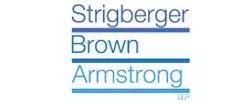The Defendant, Ceeps-Barneys Limited (“the Ceeps”), is a popular pub / sports bar beloved by students of Western University (past and present). In this matter, the Ceeps brought a motion for summary judgment for a dismissal of the plaintiffs’ action against it, as well as a dismissal of the co-defendants cross-claims against it. The plaintiffs took the position that the Ceeps breached its common-law duty of care owed by a commercial host, as well as the statutory duty of care under the Liquor Licence Act and the Occupiers Liability Act, as the plaintiff was injured by the actions of its patrons. The Ceeps took the position that the evidence established that it was not liable.
On October 24, 2009, the co-Defendant brothers, Sean and Brenden Woods, were celebrating Brenden’s graduation. They had both consumed alcohol prior to arriving at the Ceeps on the night of the incident. A representative for the Ceeps confirmed that the brothers were asked to leave after Sean had consumed alcohol at the Ceeps and was visibly intoxicated. The representative advised that a taxi was not offered because Brenden did not appear to be intoxicated. The evidence was unclear on how much alcohol Brenden had consumed that day but Brenden agreed that he was not intoxicated when he voluntarily accompanied his brother out of the Ceeps.
The Ceeps had nine to twelve security officers on duty that night. One of them provided evidence that he saw Sean and Brenden leaving the bar around the same time that the plaintiff, who was stumbling down the street in an intoxicated manner, tried to hail a cab but was refused. Sean indicated he would take the cab and slapped the plaintiff on his back. The plaintiff wrongly interpreted the slap to be malicious and a scuffle ensued. The plaintiff kicked, punched and chased Sean, who eventually swung back. The supervisor of the Ceeps security team intervened in the fight. While doing so, Brenden came from behind the supervisor and struck the plaintiff in the face. Brenden admitted to running towards the fight, interpreting the plaintiffs clenched fists as possible further aggression and then punching the plaintiff. Sean had little memory of what happened.
The supervisor of the Ceeps security team’s evidence undermined Brenden’s interpretation of the incident. The supervisor recalled that he ran over to the scuffle and was focused on verbally calming the plaintiff down. He was able to do so for 15 to 20 seconds, without physically touching the plaintiff. He did not interpret any aggression from the plaintiff when he saw a fist coming over his left shoulder, striking the plaintiff’s face. The security video also confirmed the above events / evidence.
The plaintiff could not recall the altercation as his last memory of the night was being poured a drink at another bar up the street. He conceded that he was ejected from the bar and that his blood-alcohol level was significantly high when the ambulance arrived shortly after the above altercation.
The plaintiffs tendered expert reports to support their allegations of liability against the Ceeps. Their experts opined that the altercation could have been avoided if the Ceeps had met the industry-standards of having proactive and effective security measures in place. Namely, that the Ceeps served Sean alcohol and then failed to escort him out into a taxi / bus, failed to have adequate security present outside to prevent the altercation and failed to prevent Brenden from joining the fight.
The Court ultimately dismissed the Ceeps’ motion, finding that there was a genuine issue requiring a trial on whether the Ceeps’ breached its obligations under the Occupiers Liability Act since the altercation occurred on its own parking lot premises and as none of the Ceeps’ security members monitored Brenden or took steps to prevent him from joining the altercation.
The Court noted that whether something was “reasonably foreseeable” was an objective test, requiring an analysis that focuses on whether someone in the defendant’s position ought reasonably to have foreseen the harm prior to the incident occurring rather than whether the specific defendant did. This imposed a positive obligation on the Ceeps security staff which the Ceeps failed to establish they had discharged, in order to escape liability.
The Court also found that the issue of causation and foreseeability of the plaintiff’s injuries, as well as the plaintiff’s own contributory negligence, would be for the Court to decide based on all of the evidence, including what weight should attach to the plaintiffs’ expert evidence, since the defendants had not tendered their own expert evidence on the issue of liability.
The Court found that there would be no savings in terms of time or expense to resolve the liability issues between the plaintiff and other defendants, including the plaintiff’s own contributory negligence, if summary judgment is granted in favor of the one defendant, the Ceeps.
This decision indicates that summary judgment, on the issue of liability, is unlikely to be granted in a case involving multiple layers of liability and multiple parties. While it cannot be said with certainty that the outcome would have been different if the Ceeps had obtained a rebuttal report from their experts on the issue of liability, it certainly did not assist their position to have the plaintiffs’ expert evidence proceed uncontested.
See Schiavone v. Woods, 2018 ONSC 4789
The content of this article is intended to provide a general guide to the subject matter. Specialist advice should be sought about your specific circumstances.

